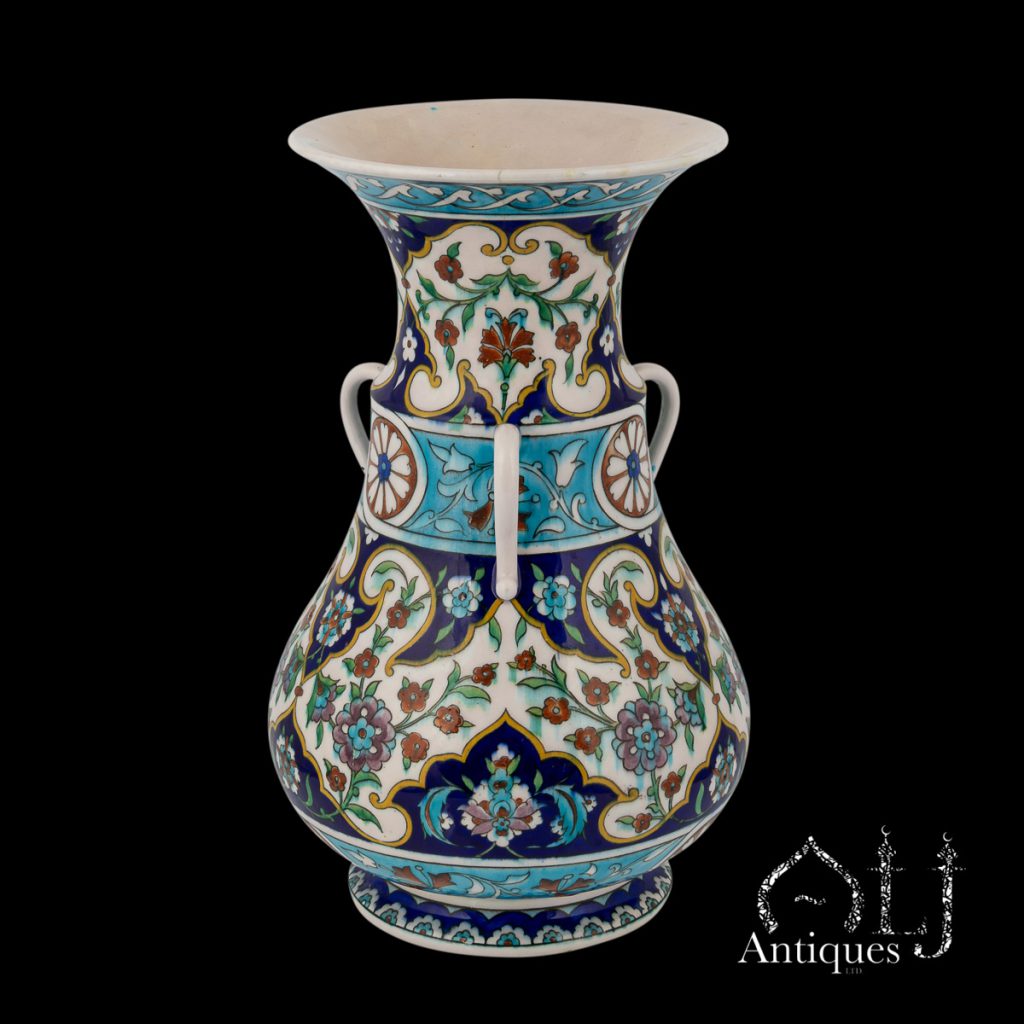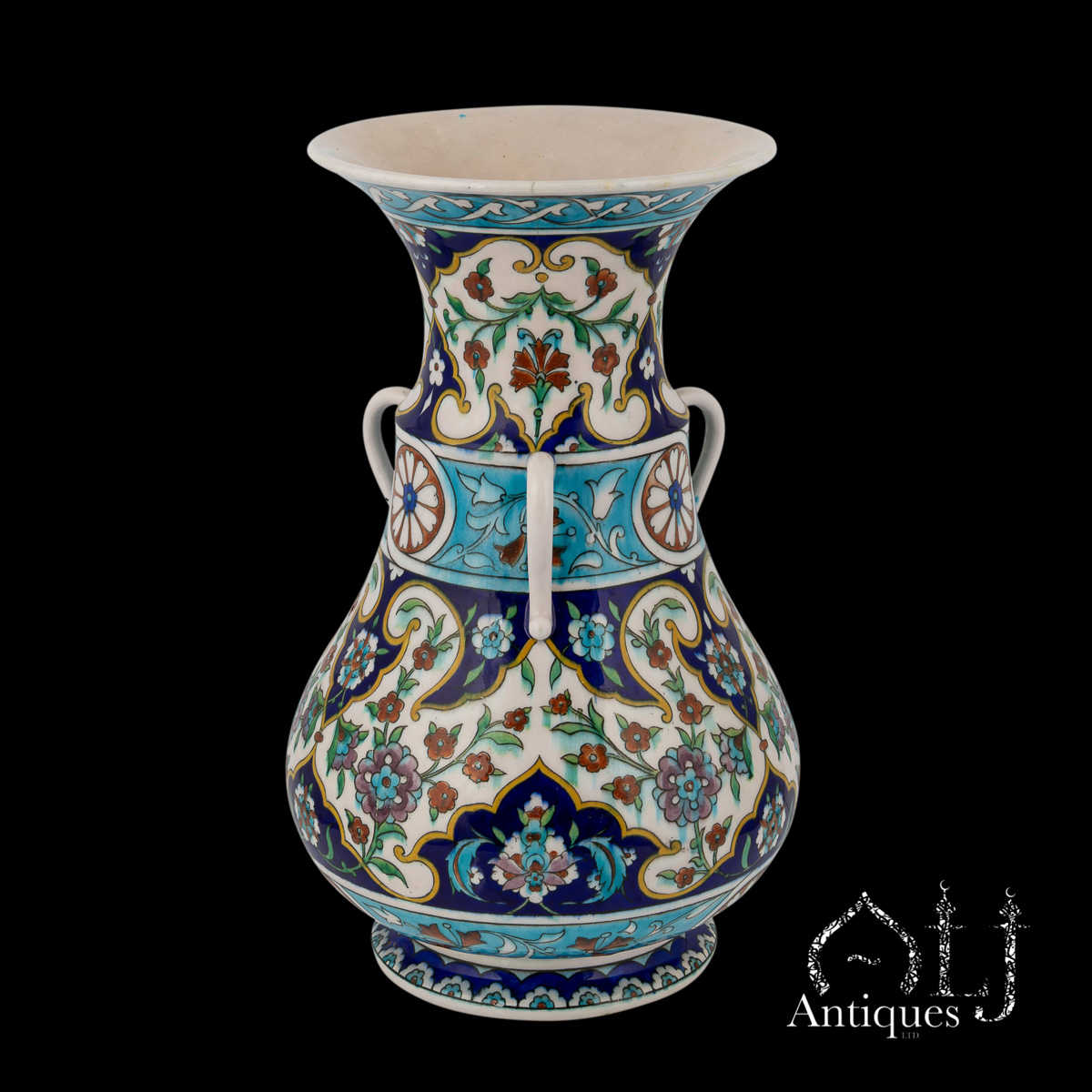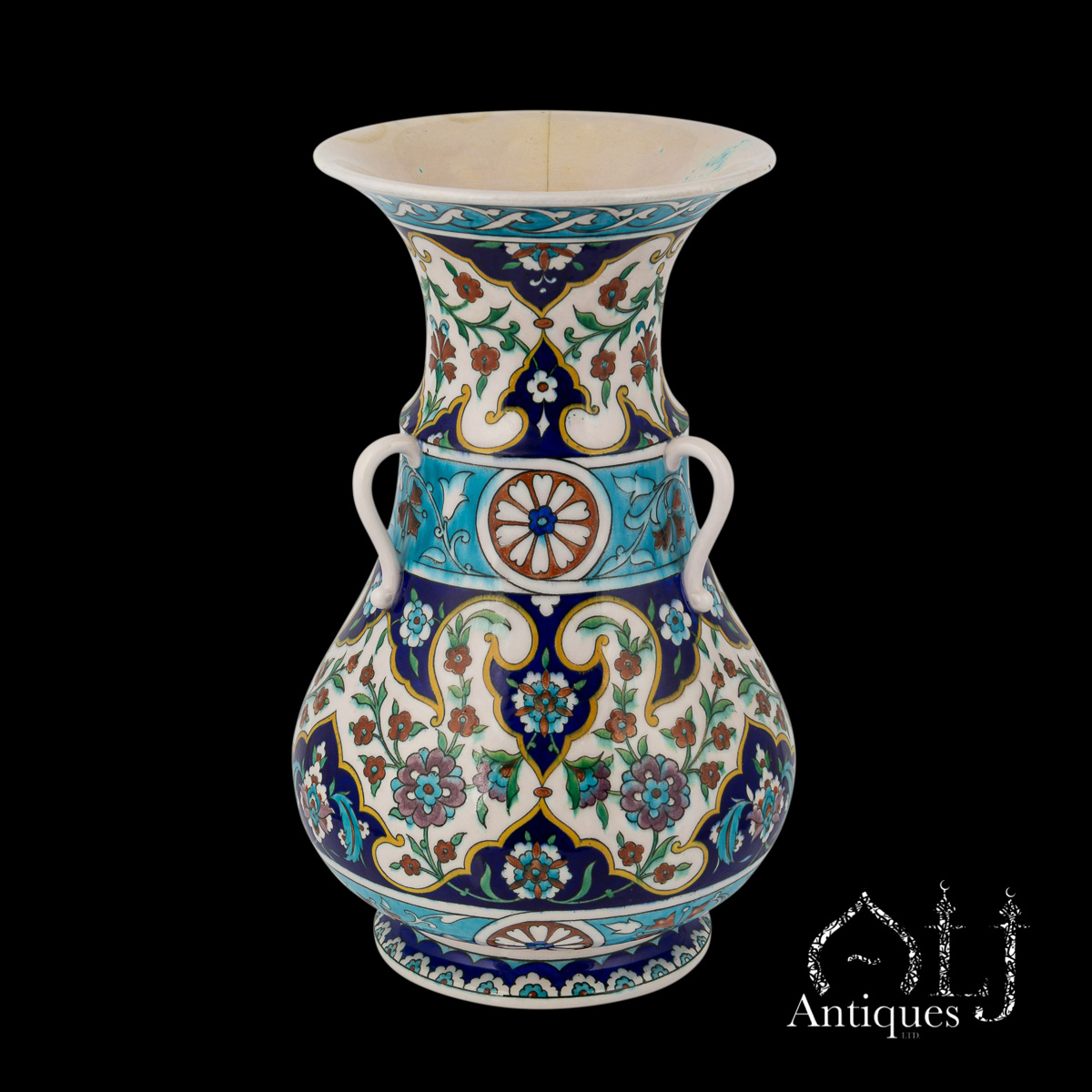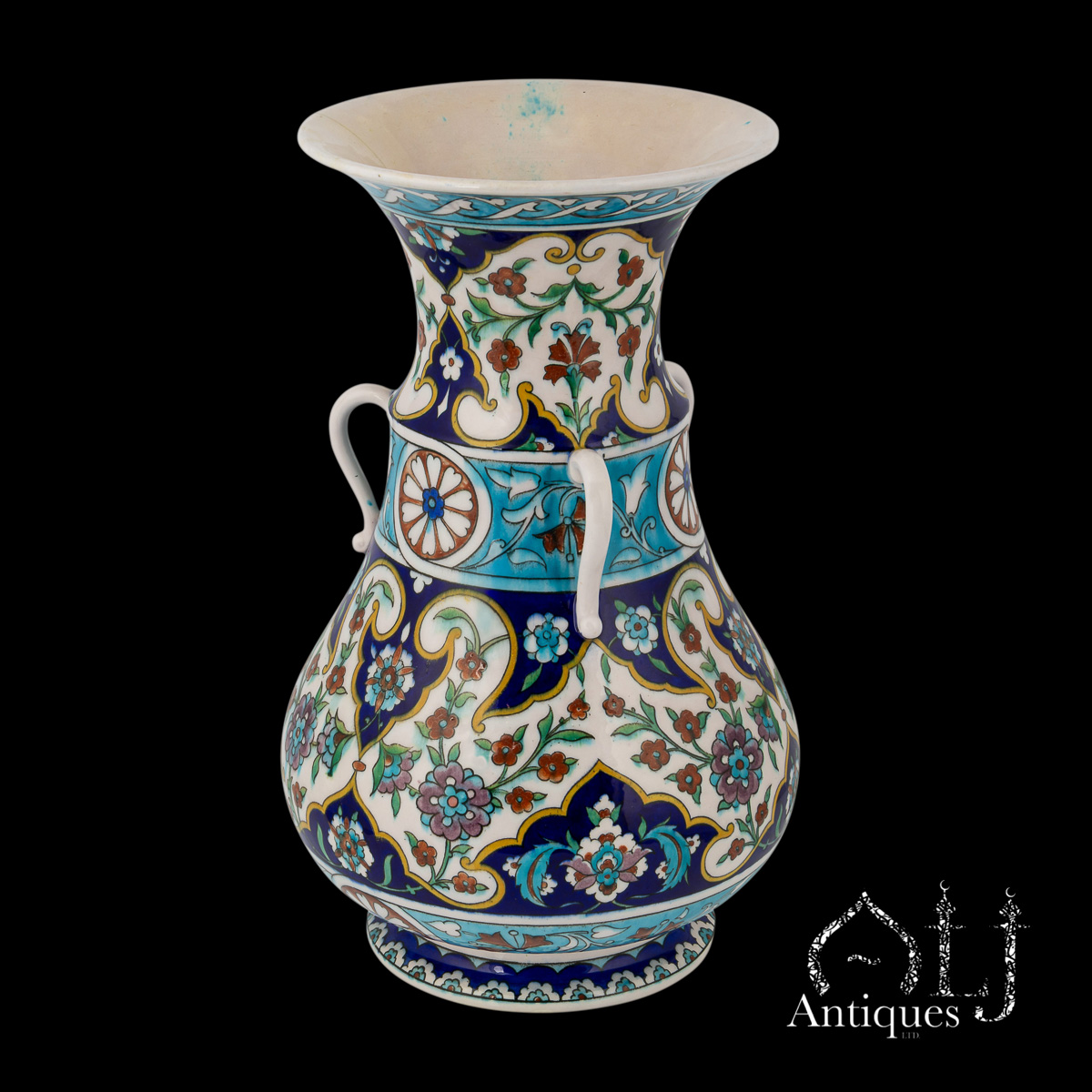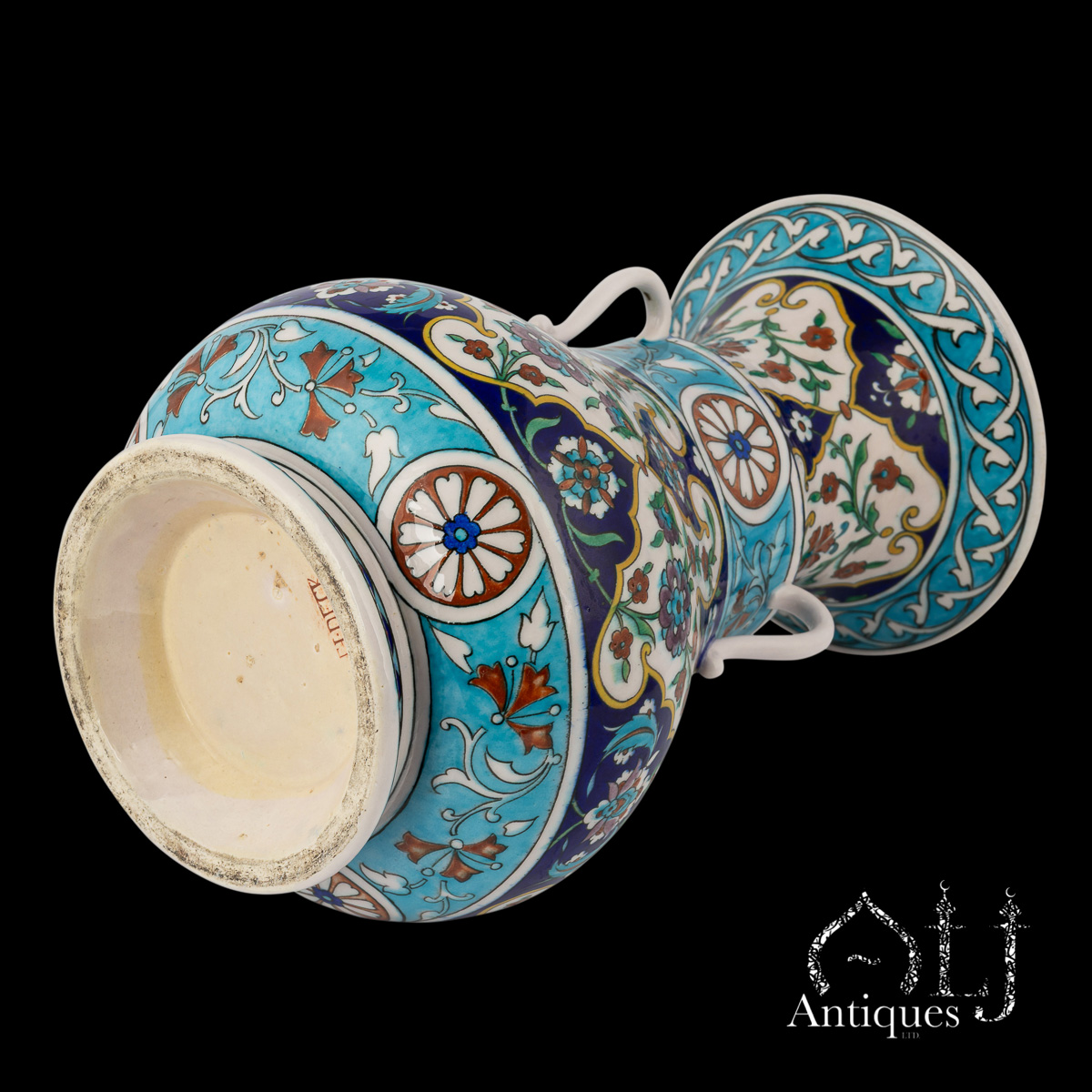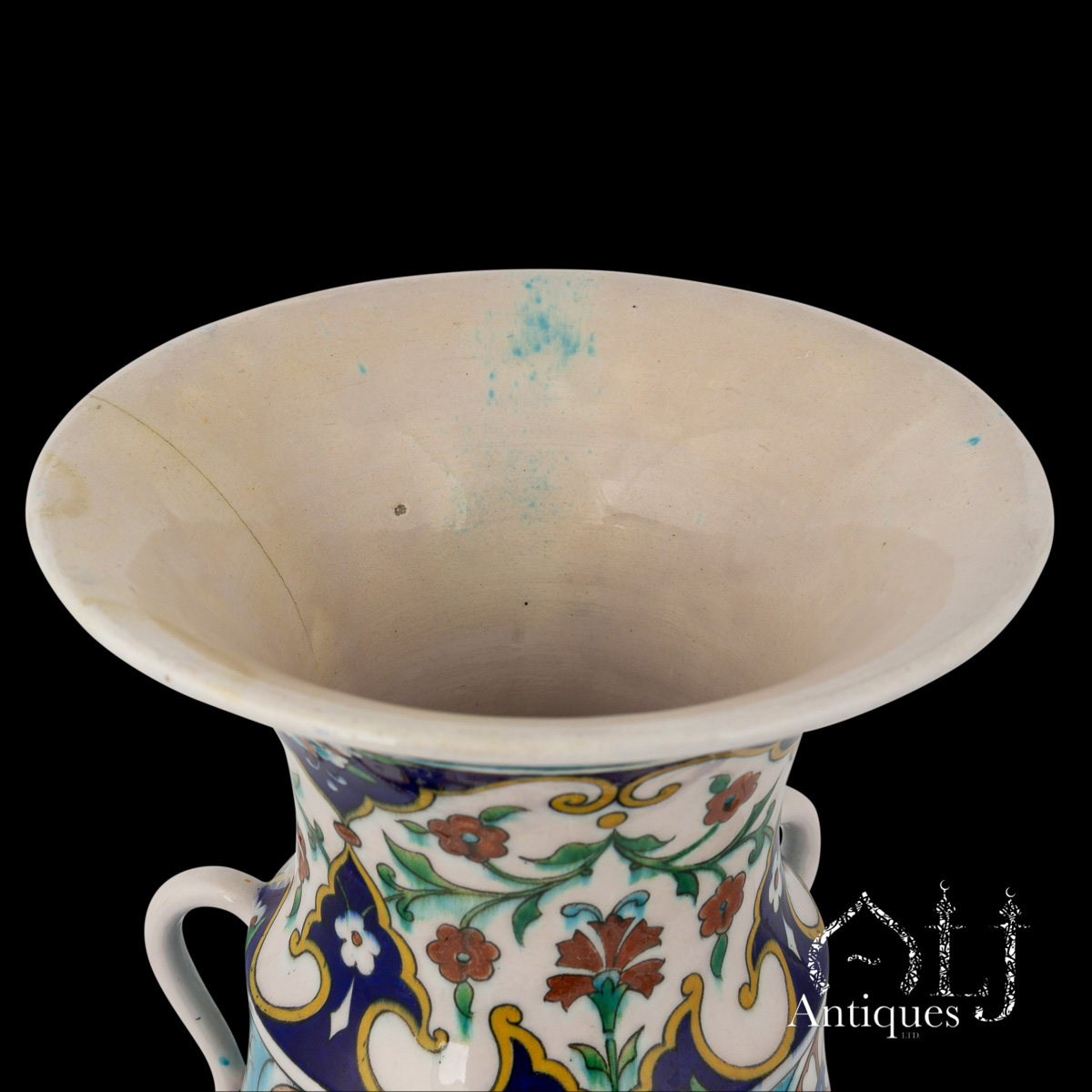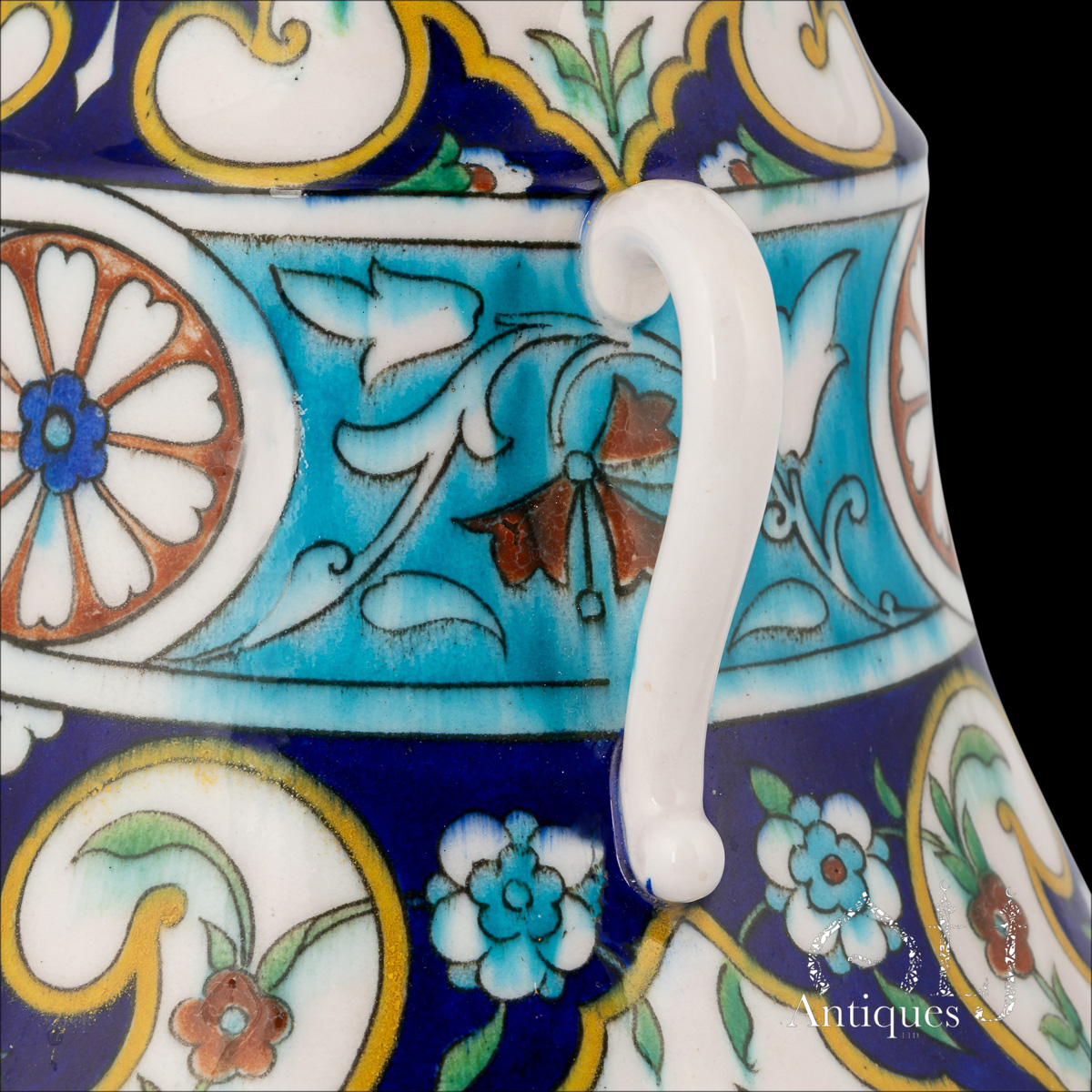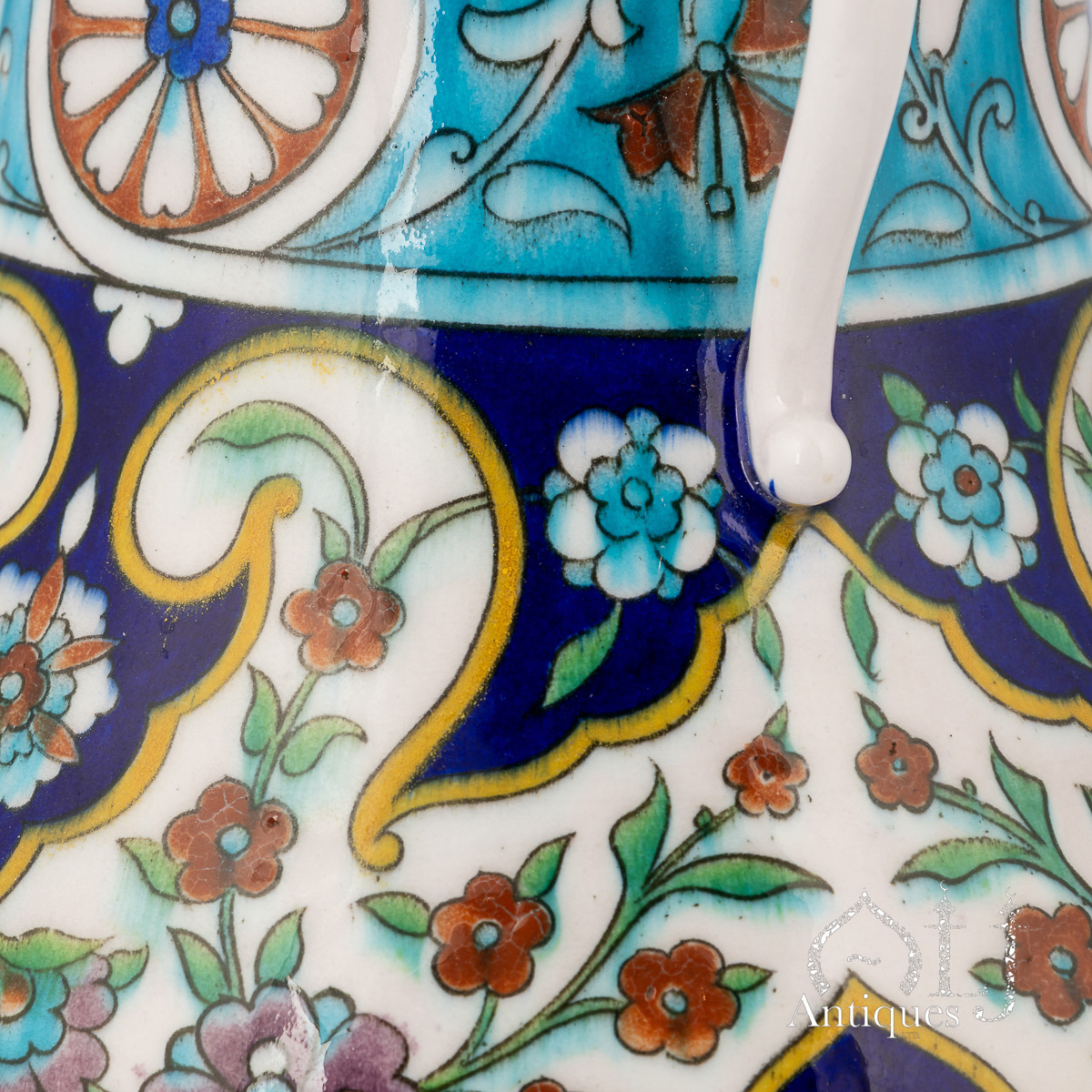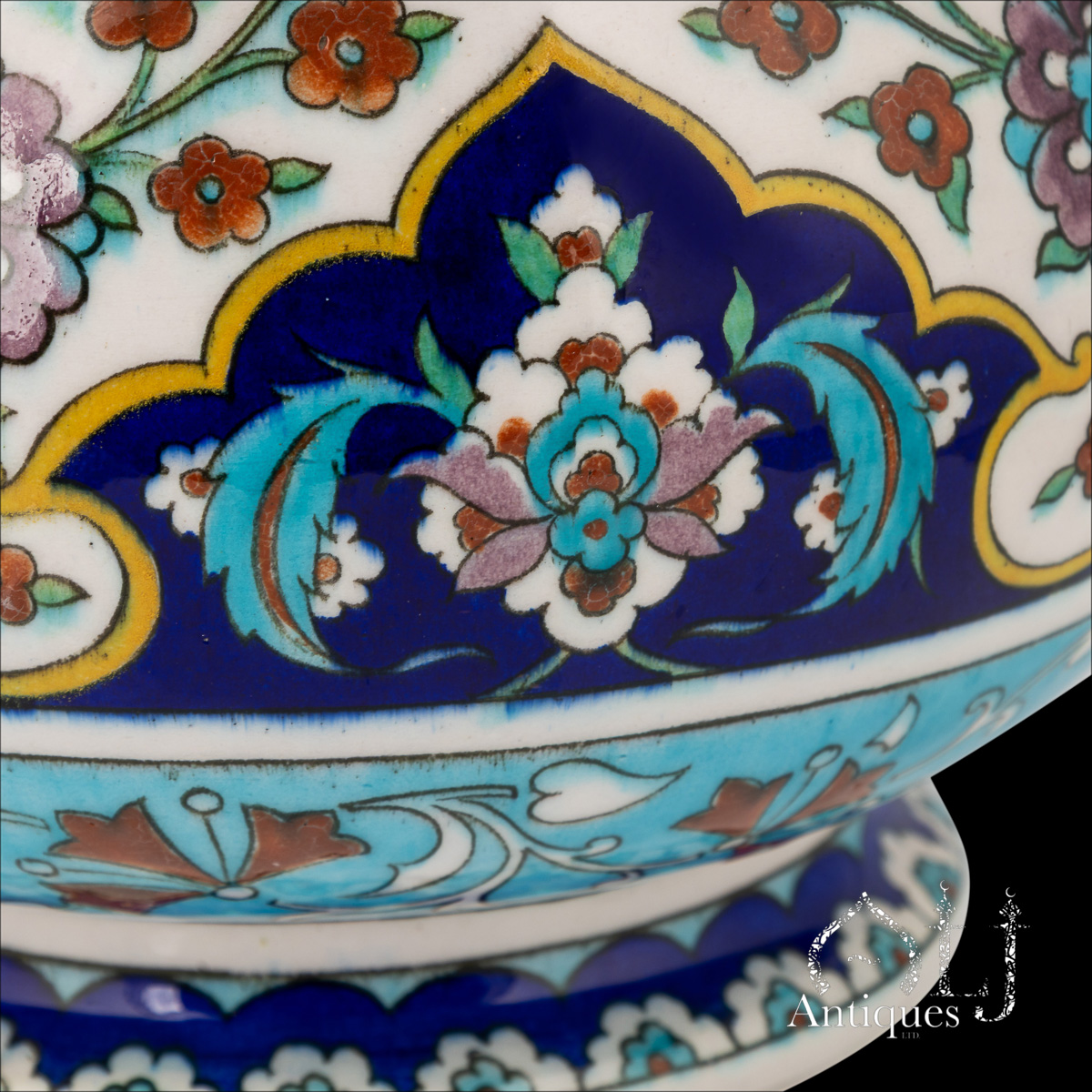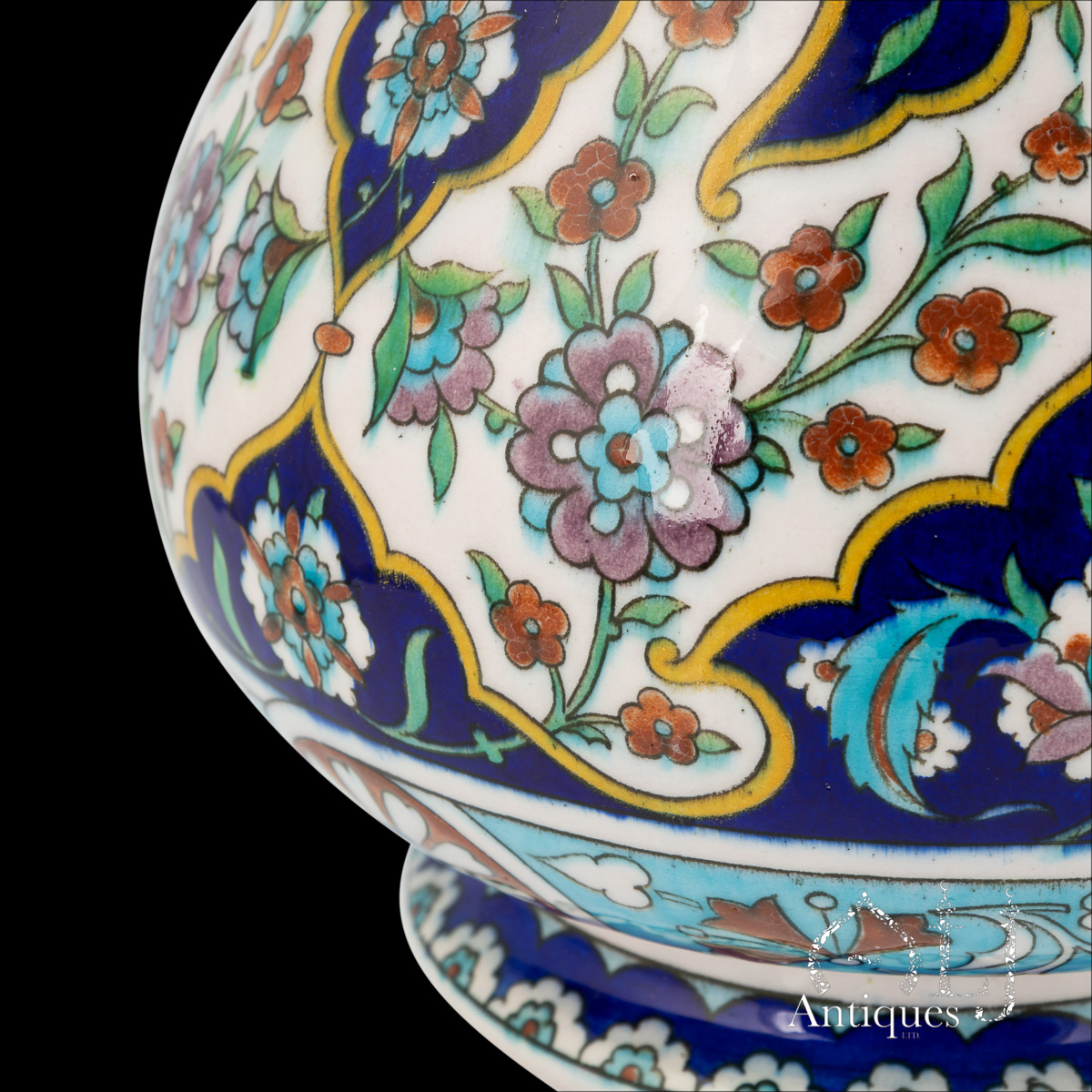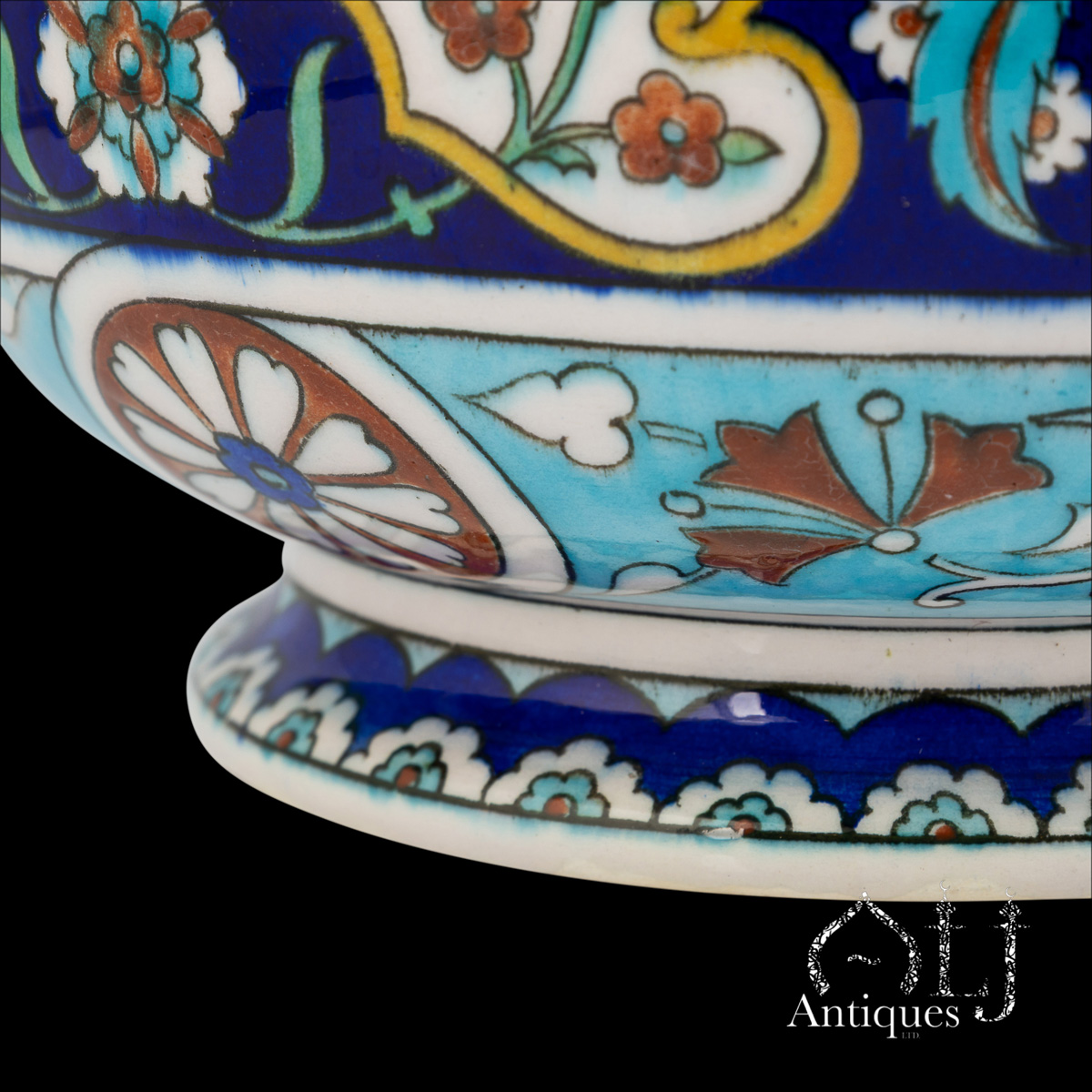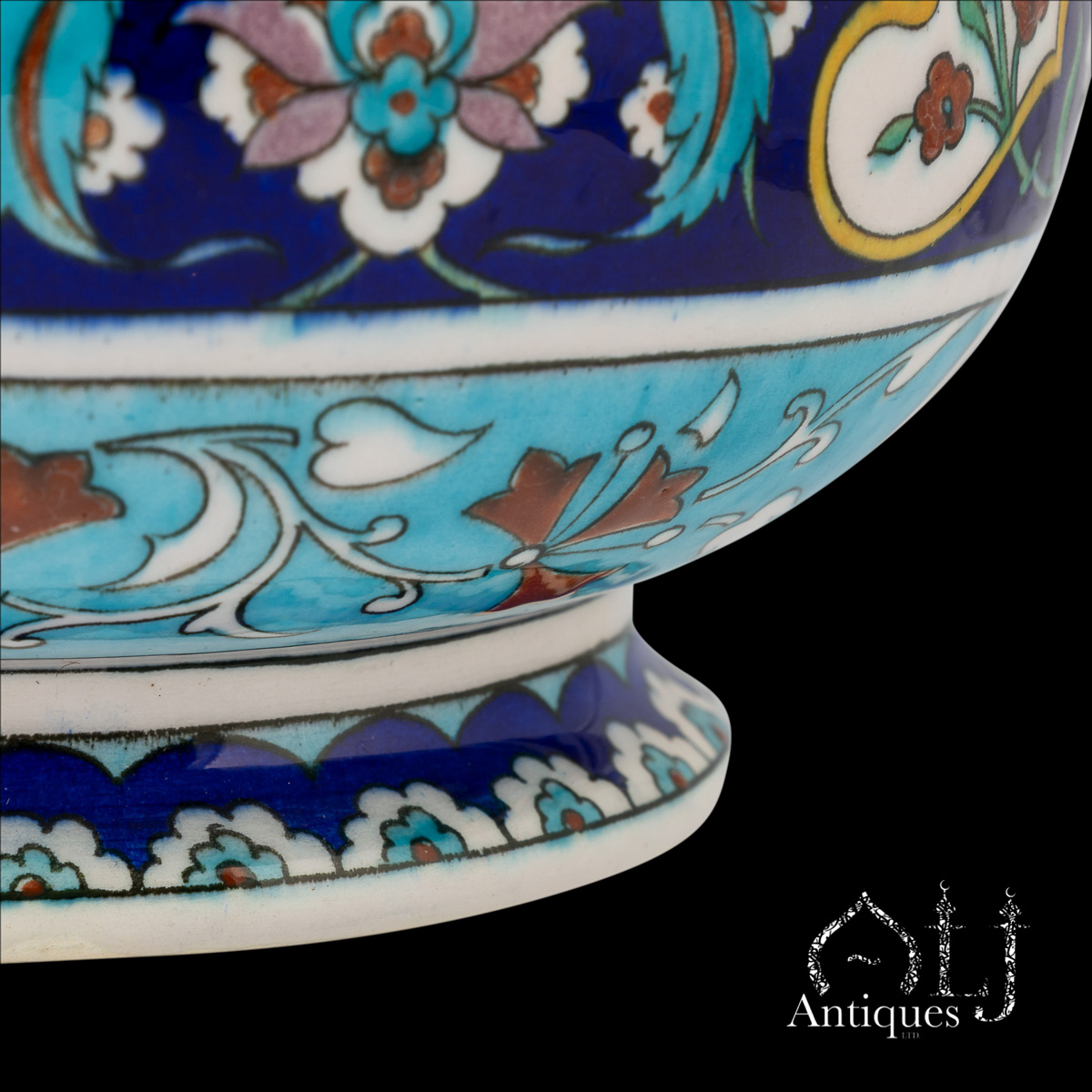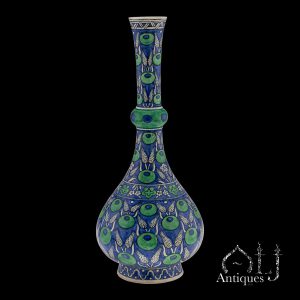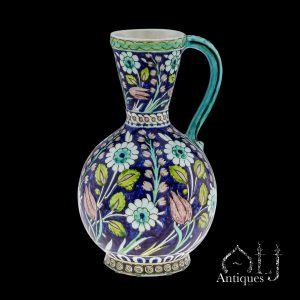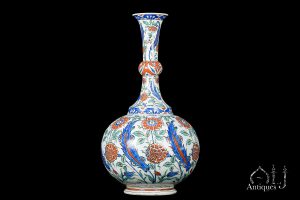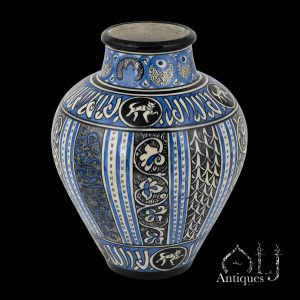Description
A museum-calibre masterpiece by the celebrated French ceramicist Joseph Théodore Deck, one of the most influential innovators in 19th-century European ceramics. Deck is internationally renowned for his Orientalist creations inspired by Islamic art, particularly Ottoman Iznik, Kütahya and Persian Safavid traditions, and was celebrated for his signature turquoise-cobalt “Deck blue” glaze. His works were exhibited at major Universal Exhibitions, including London in 1862 and Paris in 1867 and 1873. In 1887 he was appointed Director of the Manufacture Nationale de Sèvres, a testament to his importance in the history of decorative arts.
This highly desirable vessel is conceived in the historic architectural form of a mosque lamp. The shape features a finely flared conical neck above a domed baluster body supported on a raised circular foot, incorporating three elegantly applied suspension handles — a rare configuration in Western ceramic interpretations of mosque lamps. The decoration is a rich and sophisticated interpretation of Ottoman Islamic ceramic design, with scrolling saz leaves, tulip heads, carnations, rosettes and arabesques meticulously painted in underglaze cobalt blue and turquoise with accents of red, purple and green, all crisply outlined in black in true Iznik manner.
Unlike many of Deck’s mosque-lamp-inspired works that incorporate Arabic calligraphy or animal medallions, this example is exceptional in its purely floral ornamentation. This design choice emphasises the stylistic links with sacred Ottoman interiors and highlights Deck’s refined understanding of Islamic decorative language during his mature period.
The underside of the raised foot bears the impressed mark “TH.DECK” in red, confirming production at Deck’s celebrated Paris atelier. This mark is consistent with authenticated examples in major museum collections including the Musée des Arts Décoratifs in Paris, the Victoria & Albert Museum in London, and the Metropolitan Museum of Art in New York.
The closest known comparative example is the three-handled mosque-lamp vase preserved in the Musée d’Orsay, Paris, which shares the same domed body and conical neck proportions. However, that example includes Arabic inscriptions and animal roundels, while the present vase is distinguished by the absence of calligraphy and figural imagery. Other related Deck variations differ significantly in body shape, giving it a refined and unified aesthetic that emphasizes the beauty of Ottoman botanical motifs.
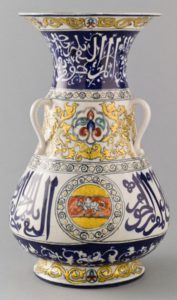
The similarly shaped three-handled mosque-lamp vase in the Musée d’Orsay, Paris, (Inventory GML 901, suggested date 1884.

